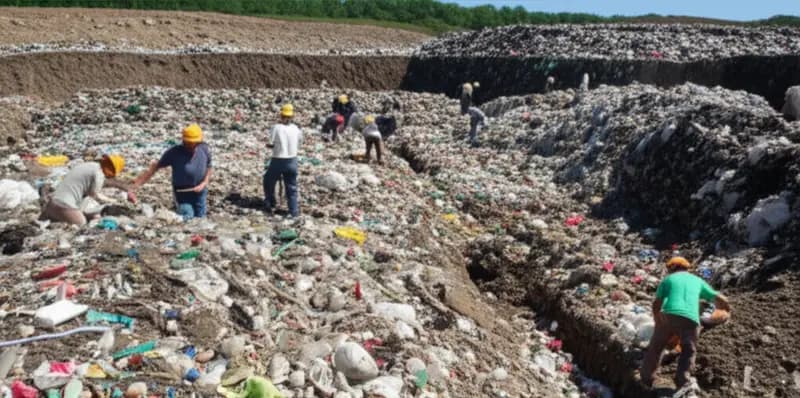The Archaeology of Us: What Our Waste Reveals
This article explores 'garbology,' the archaeological study of modern waste. By excavating landfills, researchers analyze discarded items as artifacts to understand contemporary consumption, societal values, and environmental impact. The findings provide a stark record of our disposable culture and the challenges of materials like plastic.

The discipline of archaeology has traditionally focused on the distant past, unearthing the remnants of ancient civilizations to piece together narratives of human history. However, a modern offshoot, often termed 'garbology' or the archaeology of contemporary society, turns this investigative lens upon ourselves. By excavating a modern landfill, researchers dredge up the detritus of our own time, treating our waste not as mere rubbish but as a rich repository of cultural data. Each discarded item, from a broken food utensil to a faded pamphlet, becomes a modern artifact that tells a story about our consumption patterns, technological advancements, and societal values. The sheer volume and variety of materials found provide a stark, unfiltered memorandum on the consequences of our disposable culture. This field challenges the conventional notion that history is written only in books and monuments; sometimes, it is inscribed in the things we throw away, creating a physical portfolio of our collective existence.
A key factor in this field is the analysis of materials. Whereas ancient archaeologists might study pottery shards or flint tools, modern garbologists analyze the composition of plastic containers, synthetic fabric remnants, and the chemical signatures of household products like detergent. They observe how these materials degrade—or fail to—over time. The ubiquity of plastic, for example, is a defining characteristic of our era. Its durability, a celebrated quality in manufacturing, becomes a significant environmental hurdle when it enters the waste stream. Researchers meticulously sort through layers of refuse, noting the prevalence of single-use items and the often-failed attempts to recycle them. The findings frequently reveal a significant discrepancy between what people report they throw away and what actually ends up buried. The journey of an item from a home to its final resting place is often complex, sometimes involving municipal collection systems with vast networks of underground pipe infrastructure.
The exploration extends beyond the landfill itself. Investigators might examine the contents of a discarded office, looking for clues about professional lives through old stationery or analyzing communication trends before the digital switch. Even a simple item like a disposable razor or an old electric cable can contribute to a broader understanding of daily routines and technological dependency. The goal is to create a comprehensive picture of modern life, much like an archaeologist might forge a narrative from the fragments of a Bronze Age settlement. The intricate alloy of materials found—metals, polymers, textiles—forms the very texture of our civilization's physical record. This process is not about making a crude generalization but about building a detailed, evidence-based account from the ground up.
This archaeological approach reveals much about our domestic lives. Imagine excavating a cross-section of a home's refuse. One might find pieces of old carpet, a torn foam cushion, or the tattered remains of a synthetic blanket. A kitchen's history could be told through the discovery of a degraded cleaning sponge or an empty bottle that once held a specialized cleaning agent. The intimate details of personal grooming might surface with the discovery of a melted candle used for ambiance in a bathroom. These items, once considered a necessity for comfortable living, become data points. A broken handle from a cupboard, a discarded shelf from a collapsed bookcase, or treated lumber from a DIY project all contribute to the story. The analysis can even be granular enough to distinguish between different brands based on packaging, using a price tag or label remnant as a guide.
The challenge for these researchers is immense. Unlike ancient sites where materials are often organic or simple ceramics and metals, a modern dump is a complex chemical soup. A seemingly simple object, like a child's toy, could be made of multiple types of plastic, held together with metal screws and glue. Office waste provides another chapter, with discarded scissors, pens, and the ubiquitous paper staple painting a picture of administrative work. To make sense of it all requires sophisticated analytical techniques. Researchers can't simply sweep findings into broad categories; they must meticulously document each item, creating a duplicate record for cross-referencing. This systematic cataloging is essential for identifying patterns in consumption and disposal over decades, revealing shifts in manufacturing, marketing, and consumer behavior with startling clarity.
The environmental implications are also a central theme. The discovery of a corroded sewer pipe leaking contaminants or the sheer volume of non-biodegradable packaging highlights the long-term impact of our consumption. The very opacity of a landfill—its hidden, buried nature—makes this research vital for public awareness. It brings the consequences of our choices out into the open. The transition from durable, repairable goods to disposable alternatives is vividly illustrated. Finding an old, heavy-duty refrigerator from the mid-20th century next to a modern, lightweight but irreparable portable cooling unit tells a tale of changing manufacturing philosophies. This archaeological endeavor is not just an academic exercise; it is a critical tool for understanding the legacy we are creating, one piece of waste at a time, and for informing future policies aimed at building a more sustainable relationship with the material world.